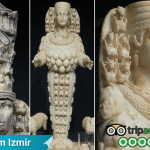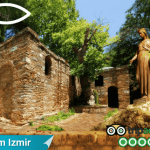The Scholastica Baths, located next to the Fountain of Trajan, is the largest bathhouse in the Ancient City of Ephesus. Constructed in the 1st century AD, these baths were restored in the 4th century AD using stones from the Prytaneion. The structure originally had three floors, including the ground level, although the third floor is now completely ruined. It has two entrances: one opening onto Curetes Street and the other on a road that crosses it perpendicularly.
Table of Contents
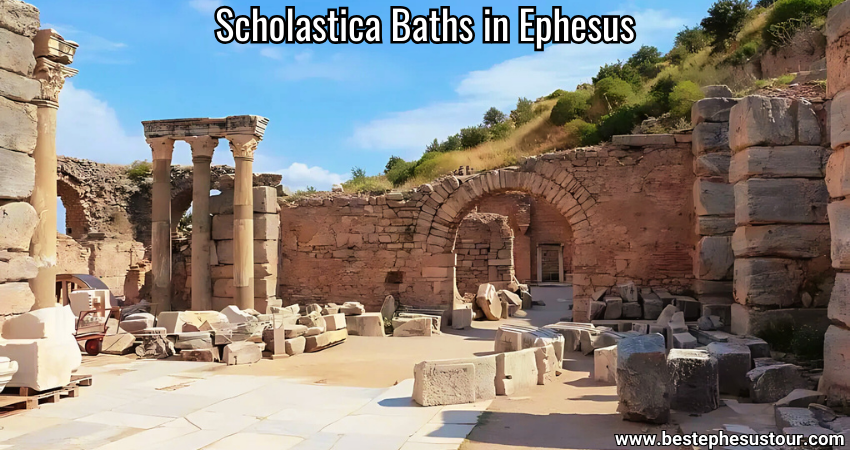
Public Baths in the Roman Period
During the Roman period, baths were public areas managed by specific customs and open to all, rich or poor. In some cases, the poor were allowed free access to benefit from the facilities. The wealthy typically visited with their slaves and often spent a considerable amount of time there.
The Bathing Process
The bathing process in Scholastica Baths began in the apodyterium, where visitors undressed. This was followed by time spent in the sudatorium, where they perspired, and then in the caldarium, where servants would bathe and massage their masters. Afterward, in the tepidarium, discussions about daily life, philosophy, and politics took place. Finally, visitors would relax in the frigidarium, swimming in its cool pool.
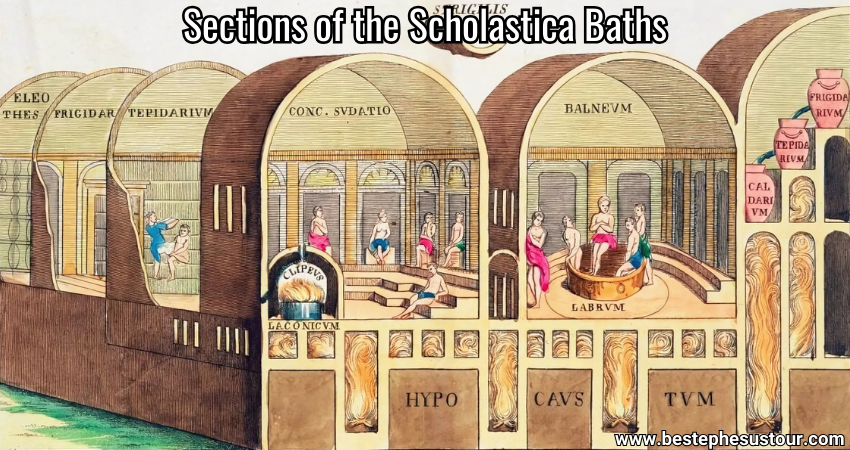
Decline and Revival of Public Baths
After the Roman era, the importance of baths declined, and by the Middle Ages, they had been largely forgotten. However, they regained significance during the Seljuk and Ottoman periods.
The Apodyterium: Changing Hall
The first hall is the apodyterium. The wall adjacent to the street is lined with columns, and this hall also features niches. A statue on one of the columns represents the Christian lady called Scholastica, who had the bath restored for the final time toward the end of the 4th century A.D.
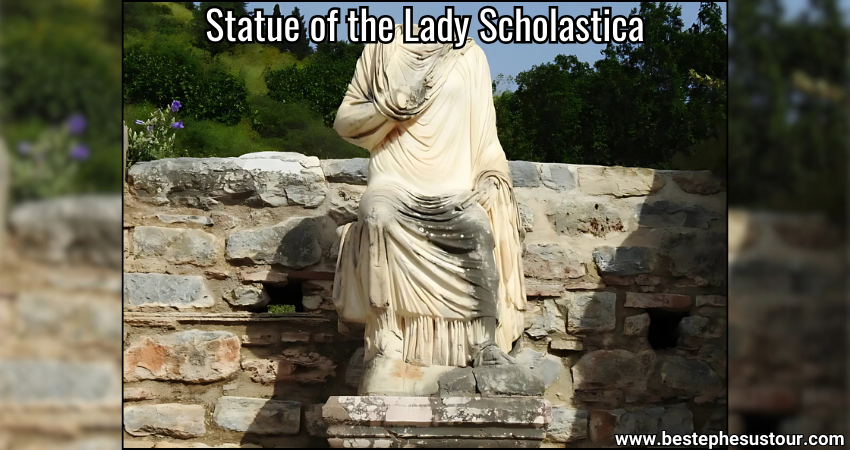
Bathing Sections: Frigidarium to Caldarium
To the west of the apodyterium is the frigidarium, with an elliptical pool in its center. A door on the north side leads to the tepidarium, whose walls and floors contain ceramic pipes that carried hot air to warm the space.
Original Decoration and Restoration
A marble mosaic, visible a few centimeters beneath the east wall surface, belongs to the original decorative layer of the bath. When the bath was restored by a Christian lady called Scholastica, this surface was covered again with marble plates.
Heating System and Architecture of the Scholastica Baths
The tepidarium connects to the caldarium via a small, narrow doorway. This room has been preserved up to its original height. The round supports beneath the floor were designed to elevate it, allowing hot air to circulate through the space. This air was channeled from the hypocaust located along the west wall.
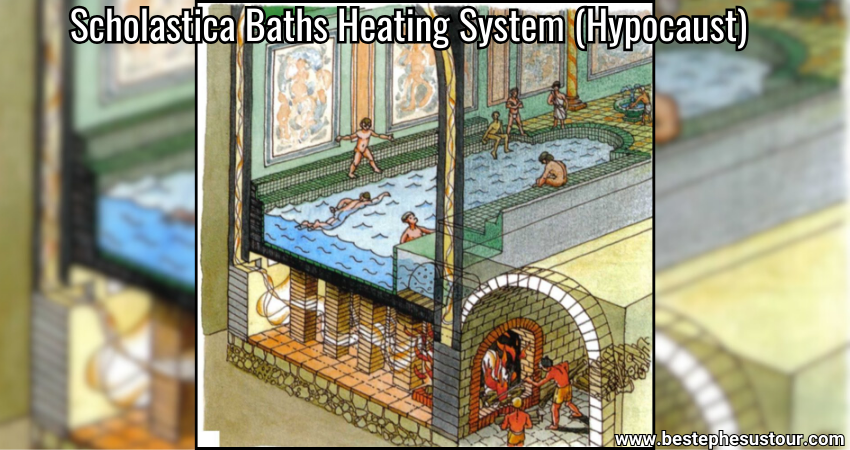
Separation of Men and Women in Scholastica Baths
During the Republican period of Ephesus, men and women bathed separately, with some large baths even having separate areas for slaves in Scholastica Baths. In the imperial period, mixed bathing became common, reflecting changing social norms, even seen by some as a moral decline. By 117 AD, Emperor Trajan introduced gender-specific bath hours due to rising concerns: women used the baths until 2:00 p.m. and men from 2:00 p.m. onward, as noted in an inscription from the Ephesus Archaeological Museum.




